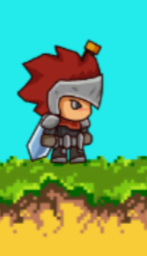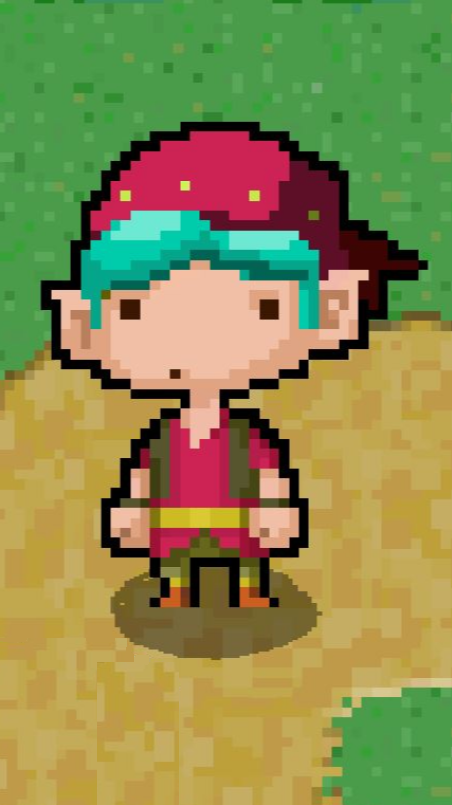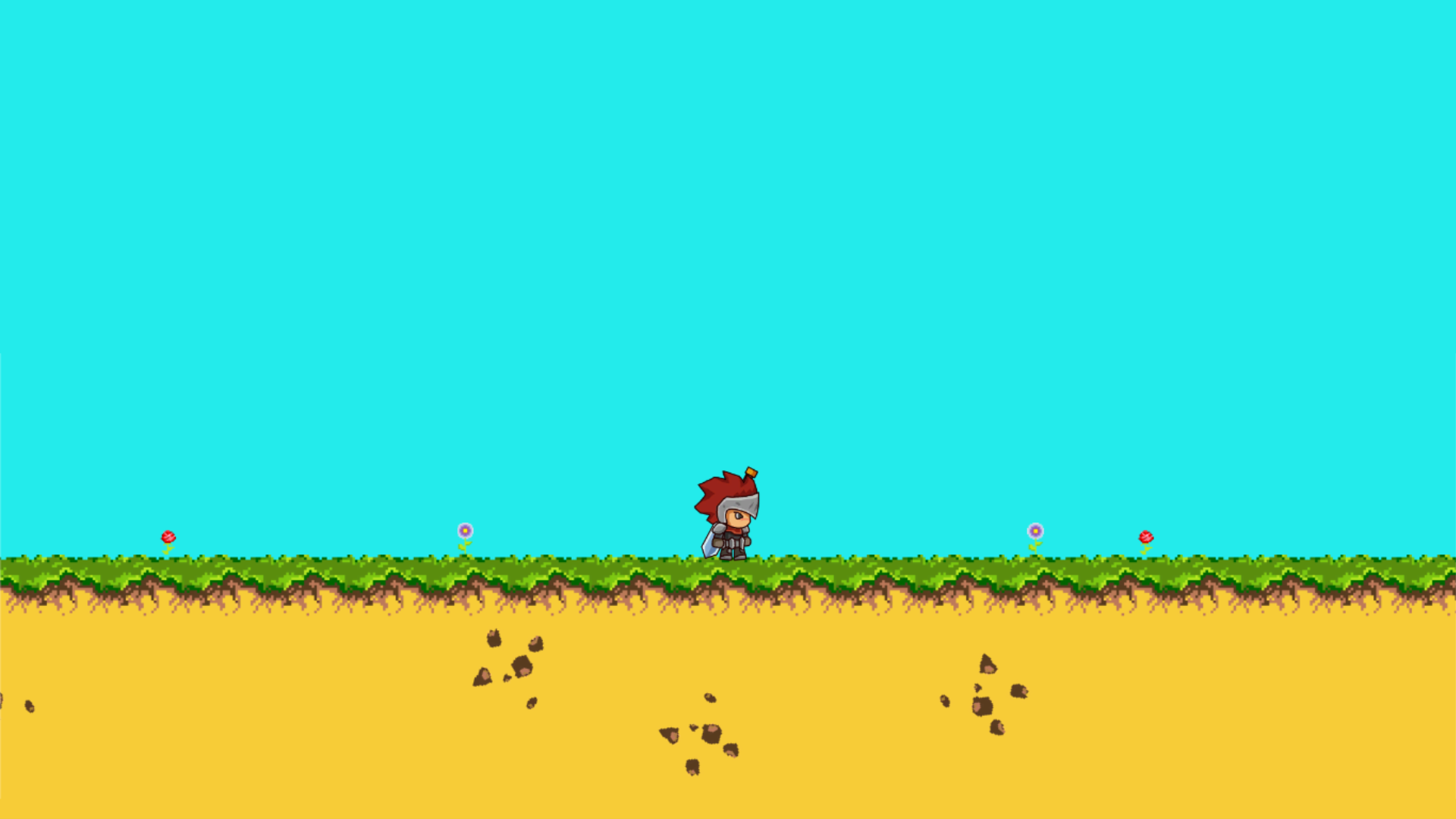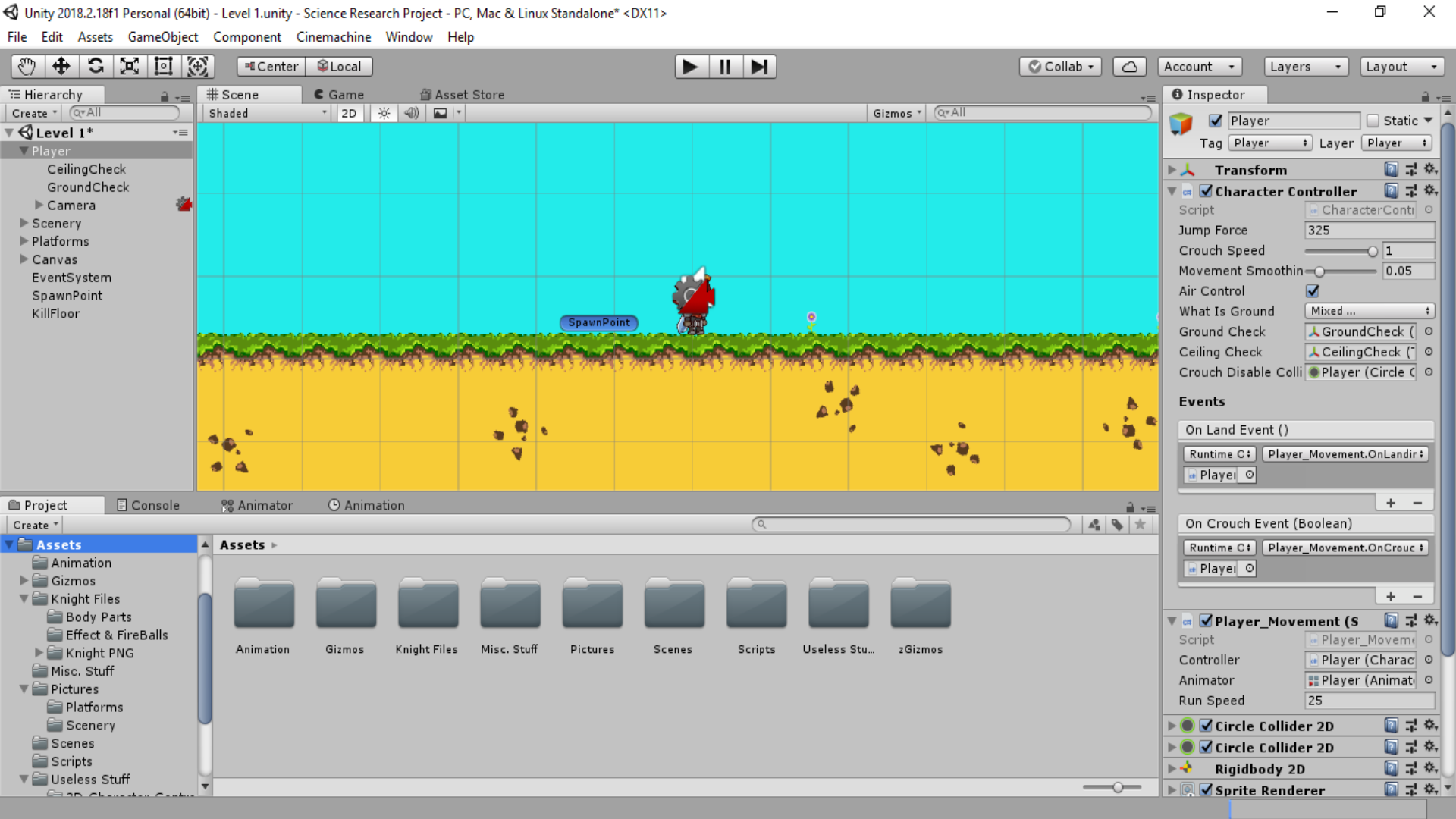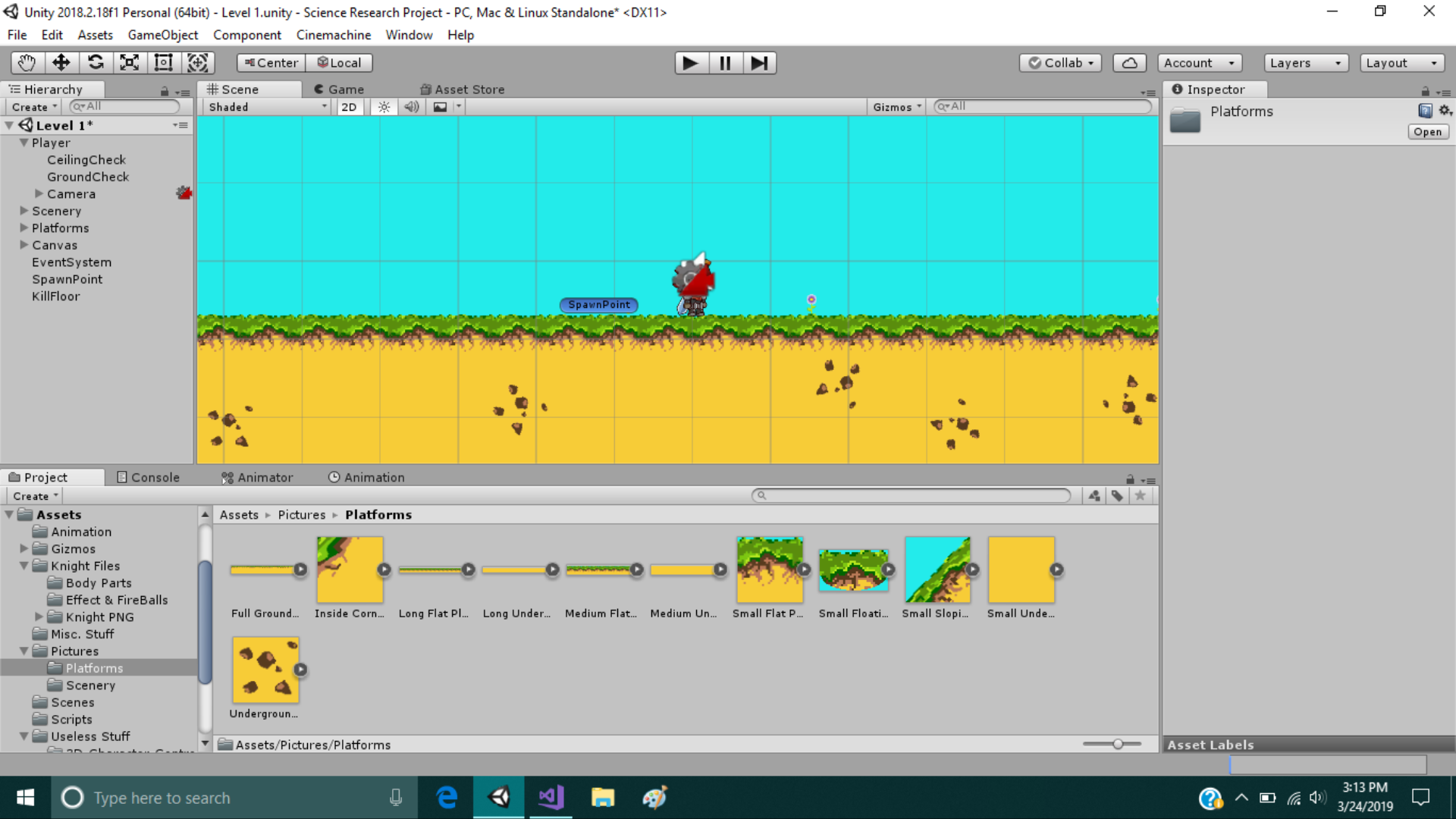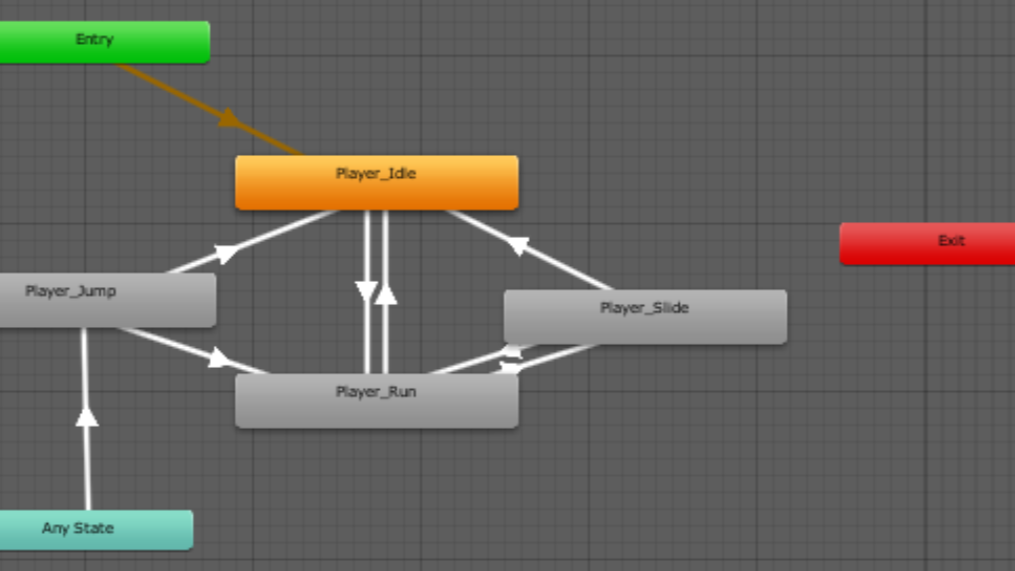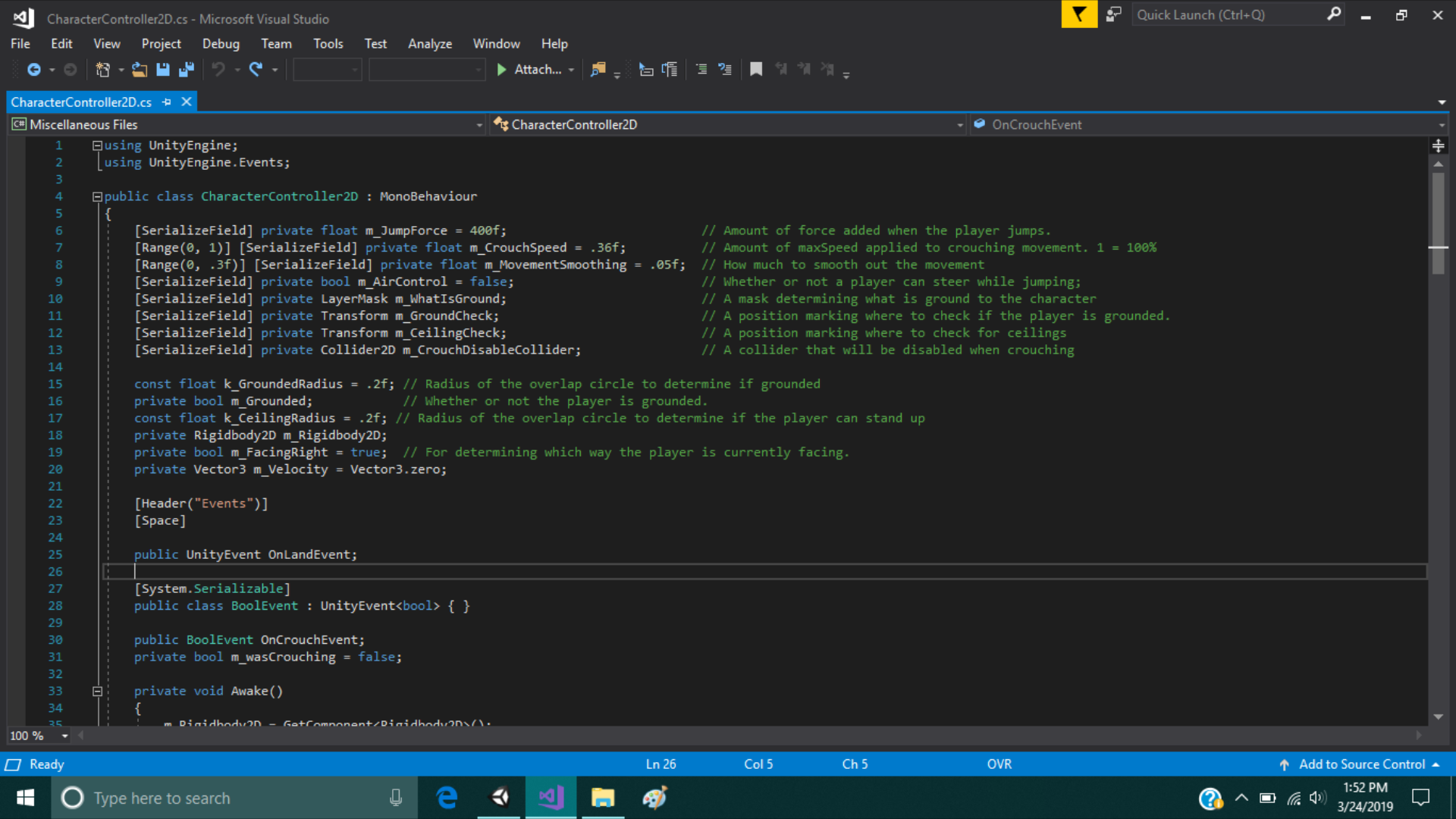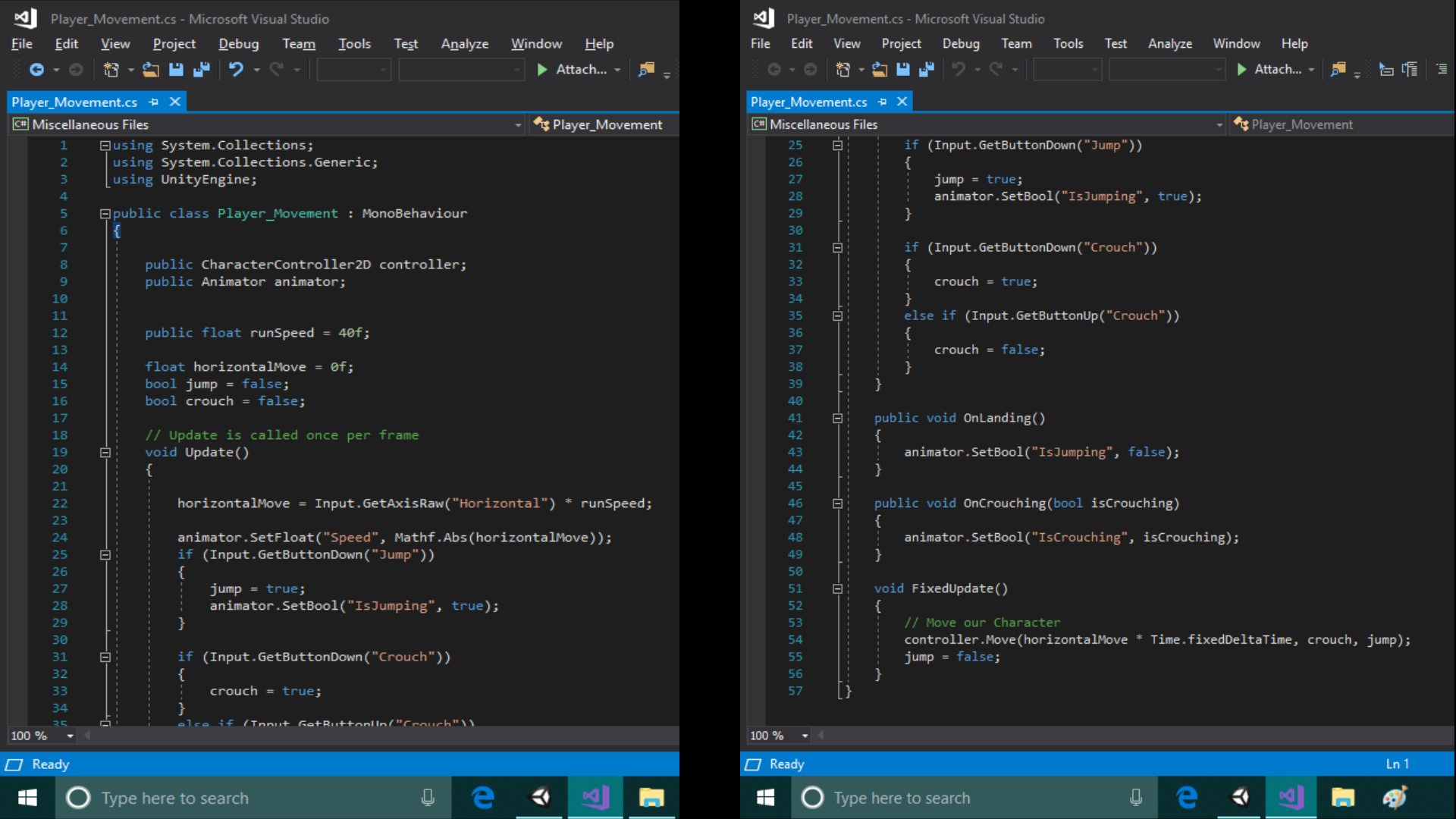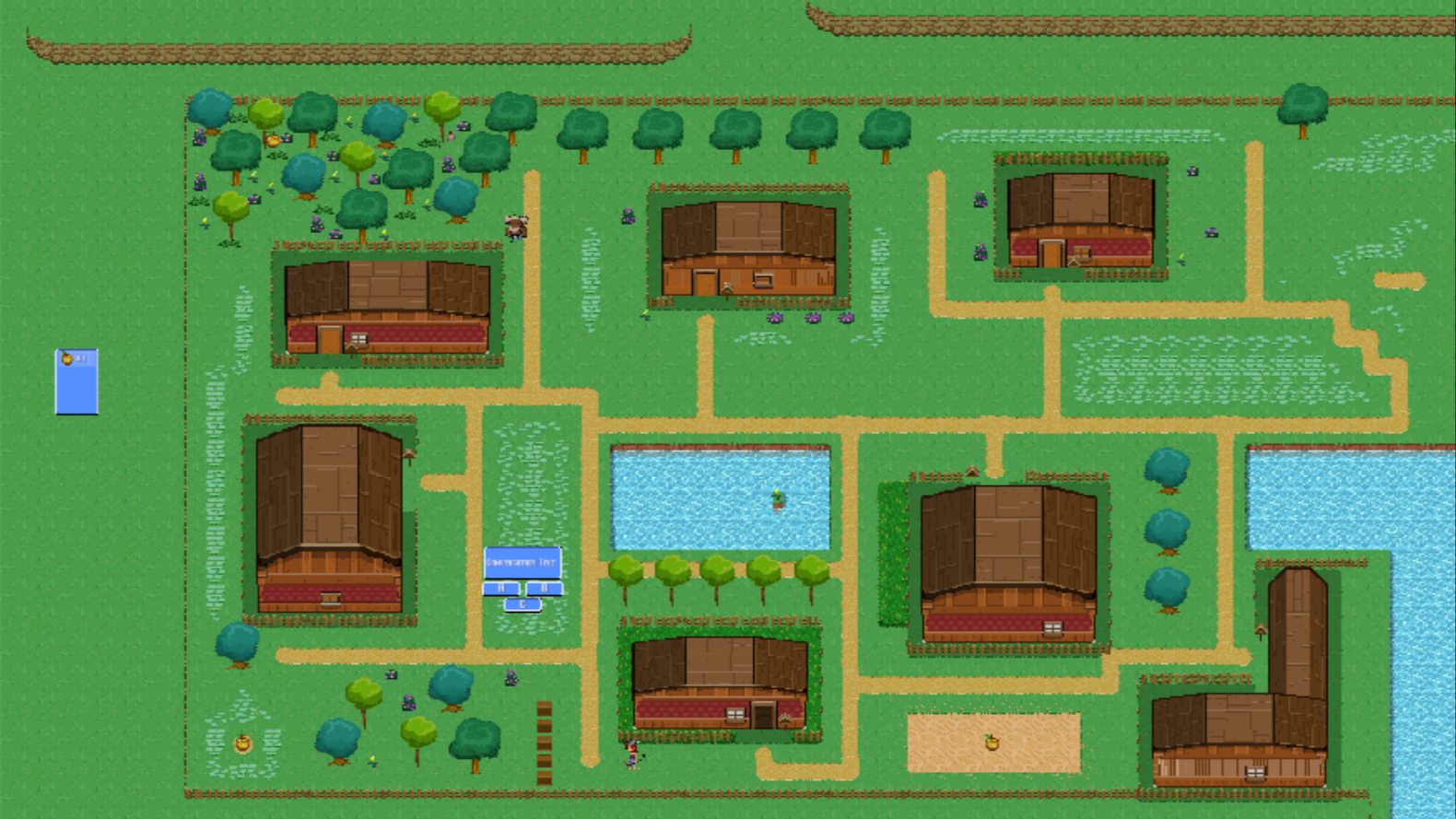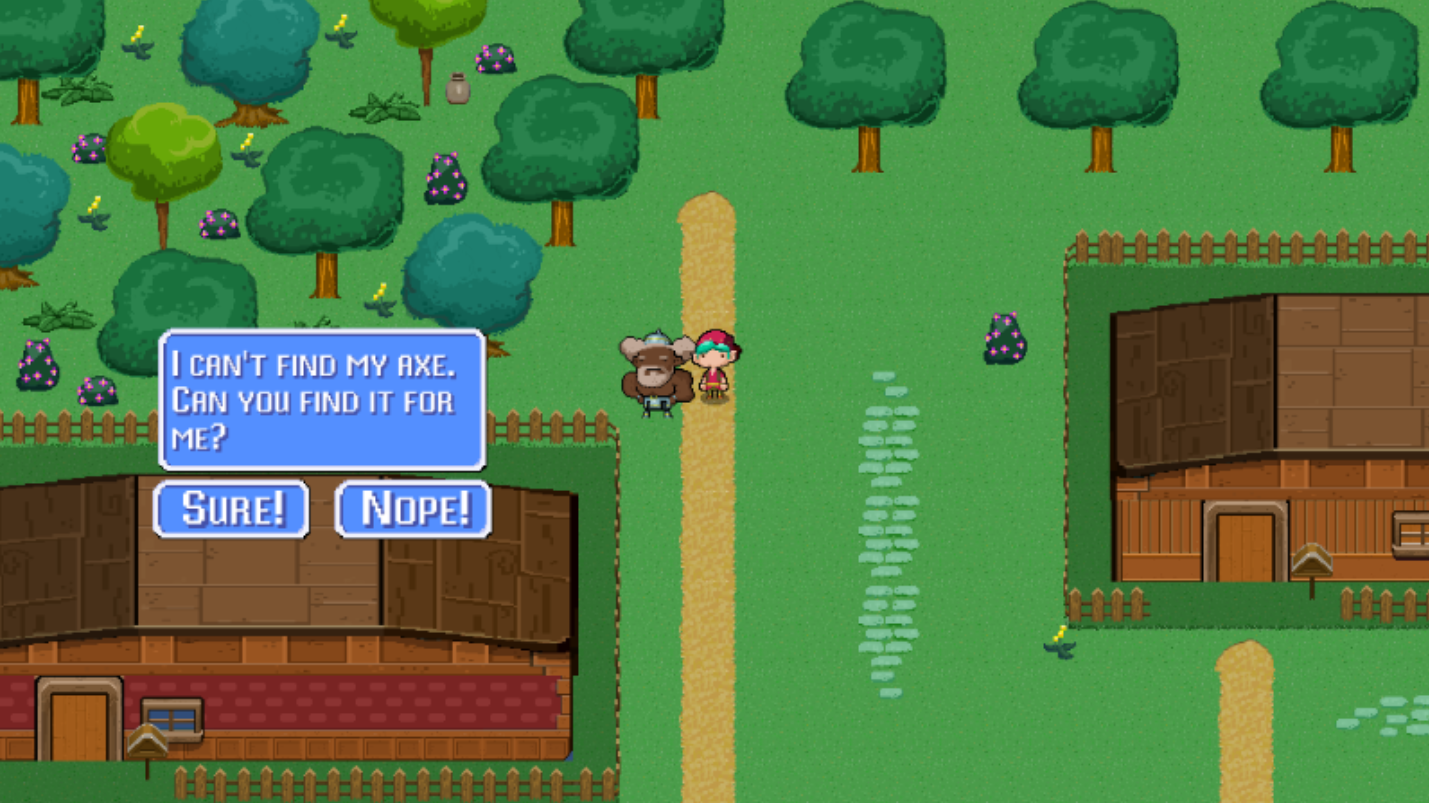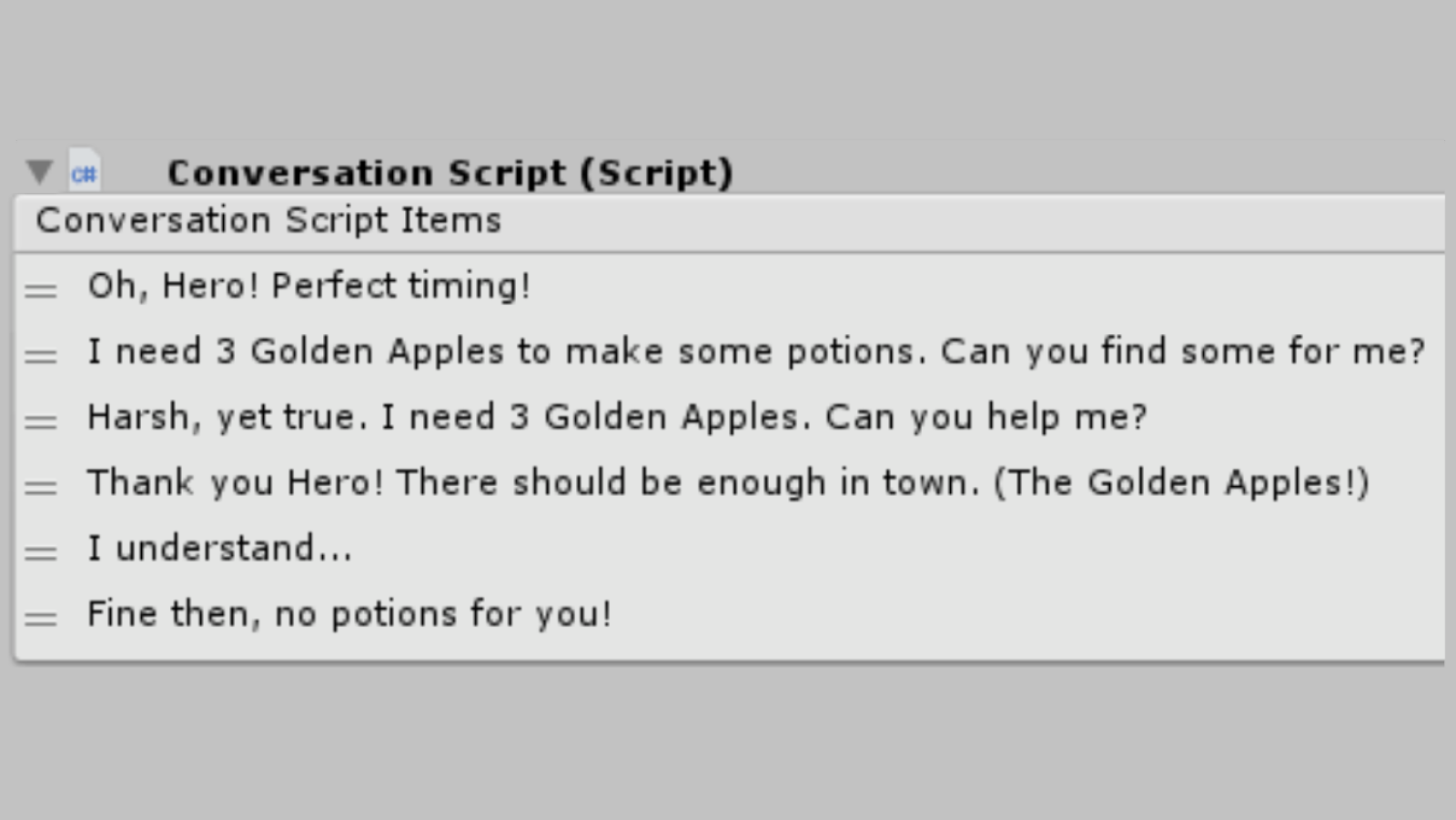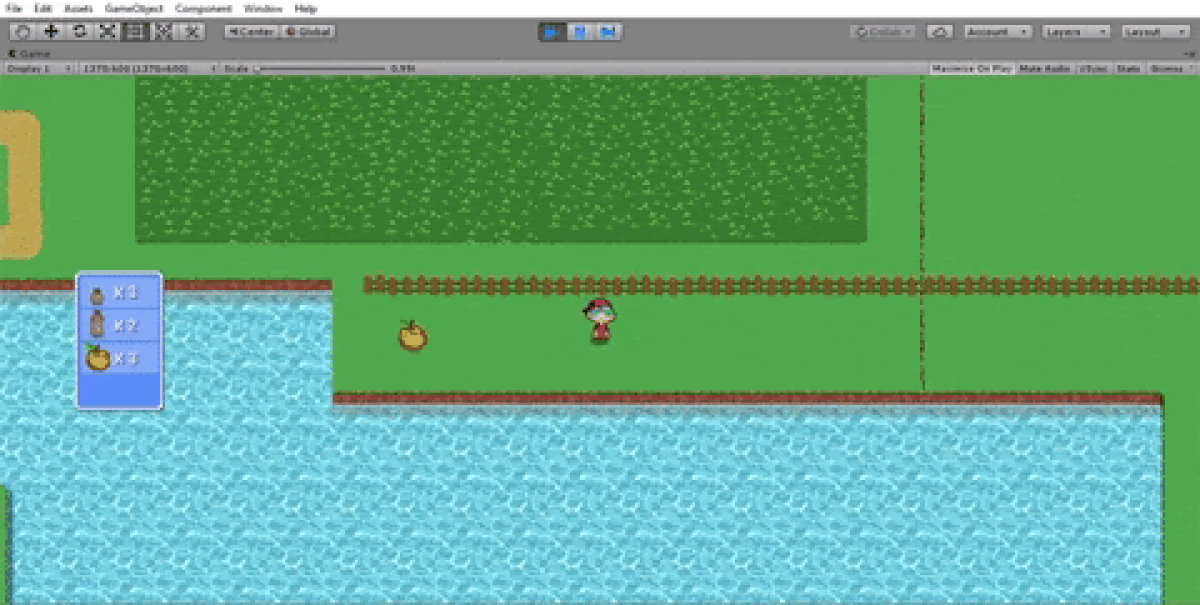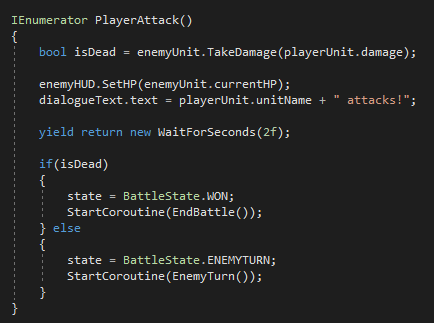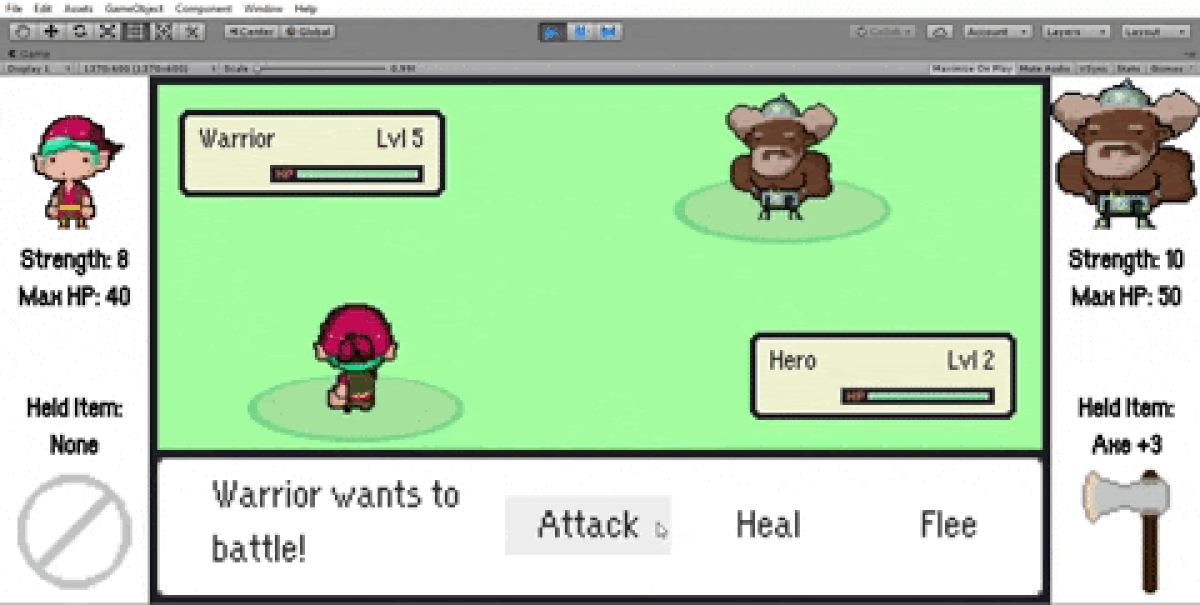|
For my second-year game, I wanted to go in a different direction. I was looking through UNITY’s asset store one day and came across "Creator Kit: RPG", an asset bundle that looked really interesting. It contained some character sprites for animations, items to interact with, and a tileset to create the world with, as well as all the scripts necessary to run the game. I downloaded it and began playing around with it to see what it had to offer. After a few hours of having fun setting up a little fantasy town, I realized that I could turn this game world into my second project.
From there, I continued to expand the town I had created. Compared to the first game, the world creation in this RPG game was done in a more "professional" way. Included in the asset bundle was a tileset containing all placeable tiles. These tiles could be joined together to form paths, fields, houses, lakes, and more. Each tile came with its own attributes, such as colliders and opacity. For example, the roof tile had no collision but could be scaled and stretched to fit the shape of any building, and if the player stepped underneath a roof, it would turn invisible and allow the player to see into the building. I utilized the tileset shown below to construct an enchanting game world for the player to explore.
However, a game needs more than a world to walk around in. This is an RPG game, and what kind of RPG game doesn't have a quest feature? The asset bundle came packaged with all of the scripts required to create quests. I created three quests for the player to complete. The first involved finding the lost axe of an NPC and then collecting some golden apples for him. The second involved retrieving stolen pots that were scattered throughout the world. The third quest was never fully incorporated into the game, but it involved a battle system, which will be explained shortly. It was very simple to create and manage quests, and a lot of fun to do at that. Of course, if there are retrieval quests to complete, then there must be an inventory system to obtain those items. Once again, the asset bundle is a complete package, boasting a built-in inventory system. This feature handled the picking up and management of items in the player's possession. It even could be extended to items brought in from outside the bundle, such as the NPC's axe which I created. This asset bundle was a huge help for a novice like me, and a lot of fun to work with as well.
This is not to say that I exclusively used the asset bundle. There were some assets it did not contain that I wanted to include in the game. As previously mentioned, I programmed one of the quests to revolve around finding an NPC's axe. There was no axe asset in the bundle, so I created it myself. Although this wasn’t a major addition, there were two significant features I wanted to add. The first was a menu system, as I wanted to incorporate a pause menu and a main menu. However, I still lacked the knowledge to do this on my own, so I needed to follow along with YouTube videos to learn how to accomplish this (again, I give credit to Brackeys for guiding me). The second feature was a turn-based battle system. I am a huge Pokémon fan, so when I saw a video by Brackeys revolving around a similar turn-based battle system, I knew that I wanted to incorporate it into my game. I followed along with the video, but it didn't create the battle system exactly how I wanted it to be implemented. I wanted to add a third option for the player to select mid-battle: an option to flee. The problem with this was that I had no idea how to go about adding a new button that would display the proper message when pressed and end the battle. I spent many hours trying to program that additional button, and eventually, I got it to work perfectly. I will never forget how excited I was the first time the button worked and how proud I was of myself for figuring out how to do it on my own. That was one of the moments that made me realize how cool programming could be and made me want to learn more about it.
|
